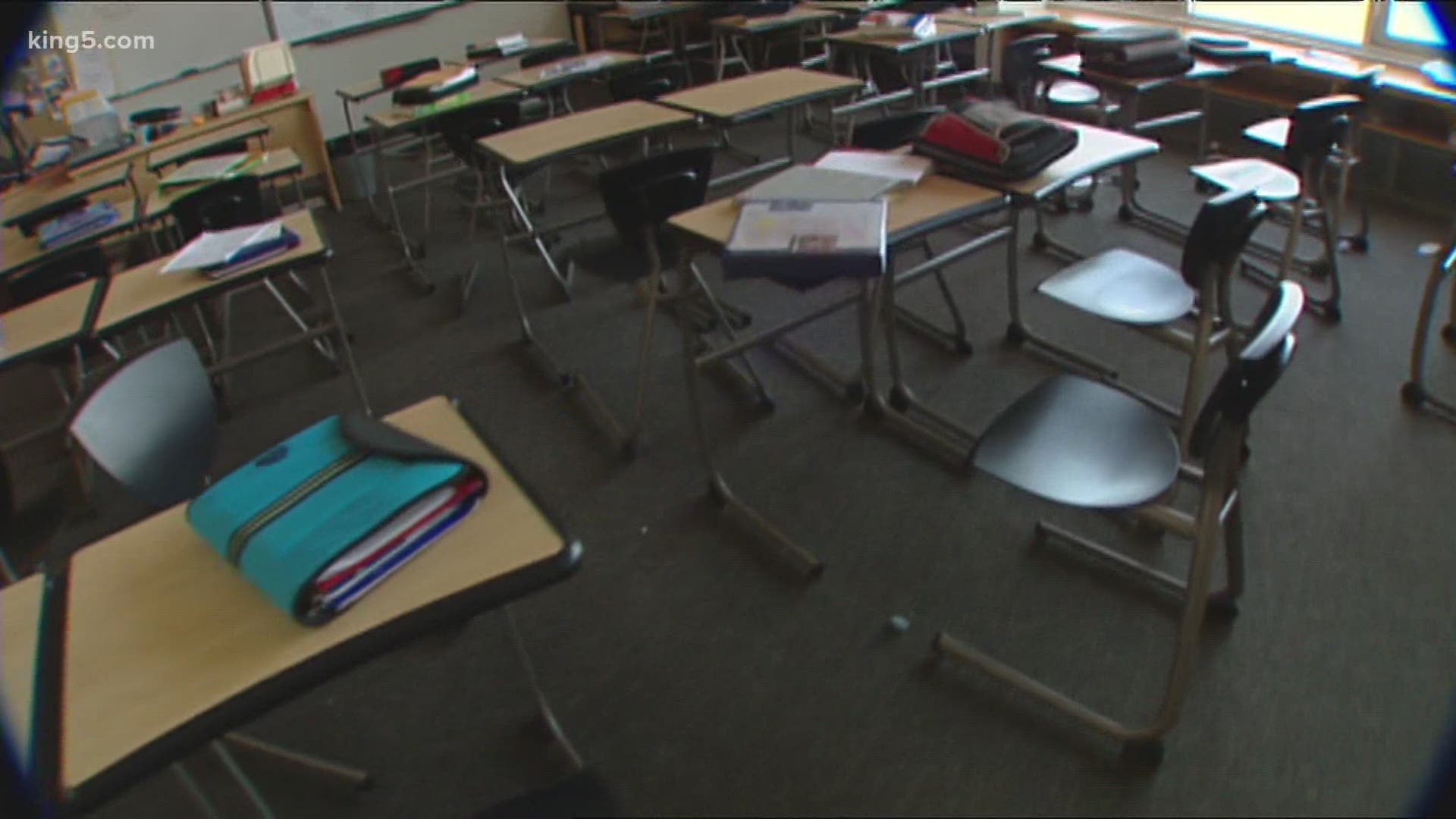SEATTLE — The Washington State Department of Health (DOH) on Friday released a report that analyzes the risks of sending students back to school for in-person instruction in the fall versus remote learning.
The report by the Institute for Disease Modeling (IDM) measures the tradeoffs between minimizing COVID-19 related health risks and maximizing educational benefits for students.
Health officials do outline a plan that could put some of the youngest students back in the classroom for a limited amount of time during the week, on a rotating schedule with other students to help limit the spread of the virus.
"What we have found is that there is no ‘zero-risk’ scenario for resuming in-person instruction in Washington state schools," said Jamie Cohen, a co-author of the IDM report. "But our analysis shows that there are pathways to resuming limited and carefully monitored in-person instruction for younger students. This can happen only if everyone works together to minimize disease transmission in their local communities."
The report modeled the health risks of resuming in-person instruction assuming a slowly declining epidemic (0.9 effective rate) and using three hypothetical COVID-19 incidence scenarios:
- A low incidence of 20 cases per 100,000 residents in the 14 days prior to school reopening (20/100,000),
- A medium incidence of 50/100,000, and
- A high incidence of 110/100,000.
If schools resume full-time in-person instruction without public health countermeasures and with high rates of disease incidence in the community, then 17.2% of students and 24.2% of teachers and staff could attend school while infectious, according to the report.
Those risks could be significantly reduced if school districts implement public health safety measures such as mask-wearing, social distancing, frequent handwashing, the segmentation of students into smaller cohorts, and rigorous daily screening of students and staff for symptoms.
Out of the school reopening plans, health officials said a hybrid instruction plan that would allow children with special needs and children in grades K-5 to receive up to two days of in-person instruction per week on an alternating schedule would minimize health risks while still providing in-person instruction.
Students would be separated into two groups (A and B) and the A group would attend school on Mondays and Tuesday, the B group would attend school on Thursdays and Fridays, and the school would be disinfected on Wednesdays, health officials said.
If that plan was implemented and transmission rates in the community were low, health officials said the percentage of students infected between September 1 and December 1 could be as low as 0.1%, and the percentage of teachers and staff infected could be as low as 0.2%.
"There are three key messages from this report," said Dr. Jeff Duchin, health officer for Public Health – Seattle & King County. "First, reducing the spread of COVID-19 in the community is the most important and effective way to reduce the risk to students, teachers and staff and get our children back to school as safely as possible. Second, there will always be some risk for COVID-19 and schools must take comprehensive steps to protect students and staff. And, third, when community COVID-19 activity decreases sufficiently, resuming in-person education with elementary students first makes most sense."
"The report supports our guidance that full in-person learning is not wise right now given current COVID-19 transmission levels in most Washington communities," said Lacy Fehrenbach, deputy secretary for COVID-19 response at DOH. "However, it is possible to resume some in-person learning for the children who need it most if we work to reduce the spread of COVID-19 in our communities."

